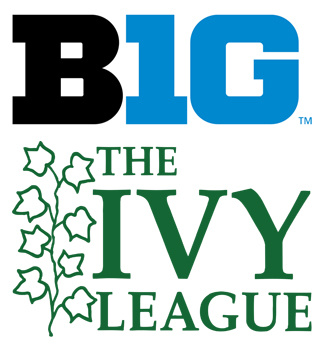
The Big Ten Conference and the Ivy League, in conjunction with the Big Ten Committee on Institutional Cooperation (CIC), have announced plans to engage in a co-sponsored, cross-institutional research collaboration to study the effects of head injuries in sports, continuing efforts dating back more than two years.
The collaboration, which brings together two prestigious academic and athletic entities, will allow for the coordination of ongoing efforts by each conference to research and address various aspects of head injuries in athletics, including concussions.

“We are excited by the possibilities of this collaboration between Big Ten Conference and Ivy League institutions to continue our close examination of the effects of head injuries in athletics,” says University of Iowa President Sally Mason, Big Ten Council of Presidents/Chancellors chair. “It will provide an incredible boost to our ongoing efforts while reinforcing the priorities of institutional research and reciprocity between some of the nation’s top academic organizations.”
In May 2010, the Big Ten became the first collegiate conference to establish a conference-wide concussion management plan, while in 2011 the Ivy League developed and enacted a series of concussion-curbing measures in the sport of football after a yearlong review. The two conferences have been exploring the possibilities for collaboration since September 2011.
In addition to forming a core leadership group to help lead the initiative, each conference will identify researchers and related participants from each school, as well as a few selected external subject-matter experts. The goal is to develop a network of sports medicine personnel, neurologists, neuropsychologists, neurosurgeons, biologists, epidemiologists, and other experts who can establish and implement research protocols across the group.
Formal collaboration between the Big Ten and the Ivy League will extend and enhance work already undertaken by the conferences as well as ongoing efforts to address issues related to head injuries in intercollegiate athletics, which have resulted in:
- A “Concussion Management Plan” for use by conference institutions, including baselines for return to academic and athletic activities (Big Ten, 2010)
- Presidential discussions concerning the existing data and research regarding concussions in athletics and identified steps to enhance student-athlete safety (Ivy League, 2010)
- A “Concussion Return to Play Checklist” and agreement from athletic medicine staffs to use the checklist as a guide for their respective schools (Ivy League, 2011)
- An ad hoc committee convened to review concussions in football and developed a series of recommendations, which were implemented in fall 2011, with the goal of lowering the incidence of concussion and subconcussive hits in football (Ivy League, 2011)
- A Head Injury Summit, with 40-plus attendees across several disciplines, including athletic medicine, neurology, neuropsychology, physics, engineering, and biological sciences (Big Ten/CIC, 2011)
- A centralized data-sharing platform to enhance existing surveillance and research and accelerate new inquiries into concussions (Big Ten/CIC, 2011)
- Additional ad hoc committees to review concussions in men’s and women’s ice hockey, soccer and lacrosse and will make recommendations for those sports (Ivy League, 2012)
- A research initiative regarding how head injuries affect athletes in all sports (Big Ten/CIC, 2012)
The Big Ten and the Ivy League, through a commitment to broad-based programming for more than 17,500 combined student-athletes, have the unique opportunity to be national leaders at the forefront of significant change. This collaborative effort will provide a broad population sample from which to obtain meaningful data on the incidence of head injuries in young adults, and will allow for the potential of longitudinal examinations into the health impact of head injuries as student-athletes transition into professional careers both on and off the field.
Through a shared vision of student-athlete wellbeing, this effort reinforces and serves as a positive representation of the position of intercollegiate athletics within the higher education model.
Note: This article is based on a joint news release issued by the Big Ten and the Ivy League. Read the original, full release here.